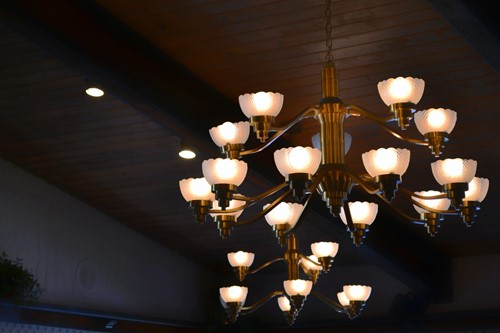Email: Deme@beachareaspecialist.com

Lighting is an extremely important but often overlooked element of interior design. No matter the style or setting, lighting choices can make or break the entire look and feel of a room. However, achieving great lighting in your interior design isn’t as simple as flipping a switch. Here we’ll go over the three main types of lighting used in interior design and how you can implement them into your next decorating project.
Ambient lighting, also sometimes referred to as general lighting, is basically what substitutes for natural light in a room. Ambient lighting controls the overall visibility in a space. A lot of ambient lighting comes in through your windows, but you will still need to function comfortably when the sun goes down.
Many designers think of lighting in layers with ambient lighting being the base. Outside of natural light, the most common form of natural light will typically be a wall or ceiling fixture. Other ways to get ambient lighting include chandeliers, lights on ceiling fans, track and recessed lighting. These options spread light evenly throughout the space rather than focusing on one particular area.
Task lighting is the second layer of home lighting. Like the name suggests, task lighting is light specifically used for certain tasks like reading, cooking and finding something in your closet. An excellent and commonly used application of task lighting would be lamps on bedside tables.
Task lighting is a great way to increase the light in a space without filling the entire room. It will allow you to get extra clarity on the task you’re working on without affecting the overall ambient lighting by too much. Some great ways to add task lighting are with table and desk lamps, hanging pendant lights, vanity lights and under-counter lights. These help you to perform specific tasks where the ambient light may not be enough.
Designers sometimes call accent lighting mood lighting. However, depending on the application, it can do much more than influence the overall atmosphere of a space. Accent lighting is used to highlight specific features or objects and draw attention to them. By that same token, you can also use accent lighting to take the focus away from less attractive aspects of a room.
One of the important things about accent lighting when compared to the other two types is that it leaves the most room for creativity. With accent lighting, the entire idea is to add specific focus and flair. For example, you could use wall sconces that direct light upward to highlight architectural elements like vaulted ceilings. You can use directed recessed lighting to shine more light on a favorite piece of artwork or onto a shelf displaying curios. Other examples of accent lighting would be candlelight, niche lighting, lighting inside cabinet doors and directed track or recessed lighting.
Understanding the 3 basic types of lighting in interior design can help you take any indoor space to the next level. By combining these three layers in a space, you’ll create a look and feel all your own while also providing a comfortable and functional atmosphere.

Live like you're on vacation every day!
Florida REALTOR®, waterfront and beach area specialist in and around St Petersburg Florida. I'm living my dream on the water. Let's make your property goals a reality.
With my business education, work experience, passion for real estate and methodical process, I am excited to help others realize their goals. I am here to guide you through the entire process and be your single resource before, during and after the transaction. My goal is to build lifelong relationships.